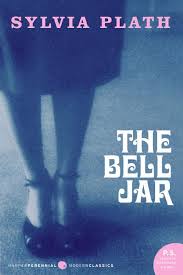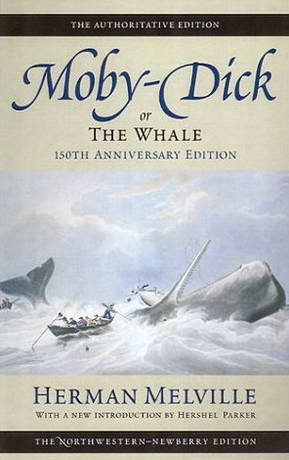 The Omnivore's Dilemma
The Omnivore's Dilemma by Michael Pollan is a fantastic book. If you are at all interested in industrial foods vs. "organic" foods vs. local food debate, read this book. And if you are not interested in those things, but care about what you are putting in your body, read this book. I have learned so much about how food gets from pasture to my plate, and not in a hidden camera at the slaughterhouse sort of way. The premise of this book is that we, as humans, are omnivores and, as such, are faced with the daily question of "What do I eat?" Pollan explores in four meals what we eat, beyond the simple designations of produce and protein. He looks at industrial food, industrial organic food, locally grown food and food he found, killed and/or harvested himself.
In his first meal, Pollan looks at where a McDonald's meal comes from. This section on industrial food was the most laborious for me, since most of it centered around the history and science of corn. Pollan decided to focus on corn as it is fed to a great percentage of our nation's cattle, chickens, pigs, and, yes, fish. In the case of cattle and fish, the animals have been bred in such a way as to make the corn, which has also been altered for edibility, more palatable for them, being that corn is not on the list of their natural go-to foods.
Why corn? It fattens the animals quickly so they can be processed quickly. Because of this changed diet as well as being kept in filthy pens prior to processing, these cows are prone to diseases that can get into the processed meats through their hide, manure and organs.
However, the influence of corn in our diet goes well beyond it feeding our cows, pigs and chickens. High fructose corn syrup, corn starch and xanthan gum are just a few of the many products derived from corn. Look at any box of food and you will probably find two or three ingredients from corn. What does all of this industrial corn eating mean for the American public? We do not know yet. We must realize that when we drink a bottle of soda or have a popsicle, we are not just having something sweet, we are eating fertilizers, pesticides and petroleum. Pollan notes that one bushel of industrial harvested corn uses about one third a barrel of oil to grow and process.
As a culmination of his industrial food research, Pollan took his wife and son to eat at McDonald's. In evaluating their meal, combined they ate over 3000 calories. Of the 30 or so ingredients in his son's chicken nuggets, 14 of them were corn based (Pollan includes chicken in that list as it ate corn). Pollan fears that, much like the koalas who only eat eucalyptus, Americans are becoming people who can only absorb corn. What happens if we become so reliant on one product and then, one year, the product, corn in this case, is hit by disease or fire in such a large percentage that the foods we have come to depend on, frozen dinners, fast food and the like, are taken from us?
In his second meal, Pollan looks at where his Whole Foods meal came from. He walks through the history of the organic food movement, from local co-op in the '70s to the industrial machine today. It is here that he uncovered several misnomers regarding organic food. For instance, free range chickens aren't as free range as the title suggests. Free range, according to the USDA, mean "access to pasture." Put that meaning into action and you have a football field sized building filled with chicken with a few small openings along the edges where chickens, should they please, venture outside. Should the chickens decide, en masse, to all go outside for a stroll, the grassy area would not be large enough to hold them. In the time Pollan spent at an organic chicken farm, no chickens stepped out of doors.
A large problem Pollan sees with industrial food is the amount of fuel it costs to sustain the market. One of the ingredients in his meal, asparagus, was from Argentina. This meant his asparagus was put on a 747, flew to California, driven to a Whole Foods hub, driven from there to his Whole Foods in Berkley, where he then drove it home to eat. And it was not even that great. Another issue he sees in industrial organics is they are no longer helping the local economy and farmers as they once did. Organic lettuce farms in California are just as large as the industrial ones, using migrant workers and fuel-fed tractors for processing. One of the companies he looked at still brought some of their produce to the local farmers' market to sell, but admitted they did not feel they belonged there anymore, that it was not fair to the small farmer in the booth next to them.
Now comes my favorite part of the book, local organic. For this meal, Pollan cooked a chicken, made chocolate souffle, and had a salad, all locally found (except the chocolate). But he had to first work for his chicken and eggs. Pollan spent a week with Joel Salitan at
Polyface Farms, a farm in Virginia that supplies beef, pork, chicken, eggs, turkey and rabbit to neighbors, restaurants, farmers markets and metropolitan clubs. Joel boasts that he is a grass farmer, as the success of his animals is dependent on the grass. The cyclical process goes something like this: cows eat the grass, a few days later chicken come and eat the grubs in the manure (reducing flies and bacteria), the chickens poop which is rich in nitrogen fuels the grass to grow, and so it repeats. Through the rotation of these animals through the grasses, Salitan is able to avoid pesticides and all other industrial products. It also allows for more animals on smaller pieces of land, meaning more bang for your acreaged buck.
One of the points Pollan reiterated was that part of America's problem with food may have something to do with the fact that we have no national cuisine. We have no distinct food identity, so we are constantly looking to attach ourselves to one or another - fast food, low carb, vegetarian, locavore, microwaveable, etc. The issue here goes beyond identity. Pollan notes that other culture's food traditions, such as the Japanese, have a natural balance of food and nutrition. Ever wonder why wasabi is served with sushi? It is an anti-microbial agent that kills whatever may be remaining on that raw fish. Why soy sauce on rice? The way the soy sauce is made and marries with the rice yields a balanced meal. Americans, as a whole, lack that balance in their meals and how they view what they eat. We go for what is fast, has attractive packaging and what is "in."
For his final meal, Pollan, hunted, gathered and grew his own meal. He harvested wild chanterelles and morels, killed a feral pig, and grew his own fruits and veggies. This part of the book seemed more self-indulgent on Pollan's part, but made me wonder just how many mushrooms Aaron and I may have passed by in our wilderness ramblings. And, of course, it re-energized the longing to have my own herb garden, which I may stop thinking about and do this summer.
My takeaways from this, practically speaking:
- Buy produce from the farmers market, organic if possible.
- Eat seasonally. If there is a peach in the supermarket in December, something is wrong. And this goes for meat too, although I am a little more sketchy on when which meat's season is.
- Research
Community Supports Agriculture (CSAs), to join next produce season.
- Sign up for
this chicken CSA and seek out a beef one. If you are in my neck of the woods and want to get in on this, please let me know - chicken in bulk never looked so tasty!
- Have people over to share a meal with on a more regular basis. Being away from home, I miss the family dinner atmosphere and, as much as I like House, he just does not make for a genial dinner guest.
Some links for further exploration:
Pollan's Twelve Commandments of EatingPollan Lectures at Google - This is a perfectly concise synopsis of Pollan's books, I believe.
Eat Wild - A website where you can find what farms sell grass-fed meat near you.
Local Harvest - A website that directs you to CSAs in your area.
 This is not the book I set out reading for December's challenge. I may revisit the one I set aside again, but it was a little too much for me given the length of the book and the time I had available to read. And yes, maybe I was being a little lazy, not trying hard enough to get into book X. Such is life and such is reading.
This is not the book I set out reading for December's challenge. I may revisit the one I set aside again, but it was a little too much for me given the length of the book and the time I had available to read. And yes, maybe I was being a little lazy, not trying hard enough to get into book X. Such is life and such is reading.




















